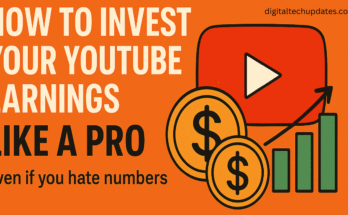Sharing is caring, especially when it comes to content.
A great article can have many lives, circulate between platforms and generate traffic for months or even years.
But what does it take to write an article that not only drives organic traffic, but expands your reach through a variety of channels?
In this guide, we’re delving into the masterful art of article marketing, from ideating a topic, to writing content, to establishing a viral-worthy sharing strategy.
Sure, article marketing has gotten a bad rap and been abused by some. And yet, it’s still a viable content marketing tactic when done right. That is where we will focus.
What is article marketing?
Article marketing is an area of content marketing that involves writing and distributing articles through a variety of mediums.
Typically, these articles are designed to promote the author’s business or website through backlinks created, authority building, and visibility gained.
How Article Marketing Helps SEO
Article marketing involves creating valuable and informative content for users to read online.
Commercial
Continue reading below
When users search for a certain topic (primarily within Google), they are directed to the highest-ranking web pages and blog posts related to that topic.
This means website owners can publish their own article content, optimize it for search engines, and rank on Google Search for a variety of topics.
Get the optimization game right and you can drive dozens and even thousands of users to your website with your articles.
SEO benefits of article marketing
Article marketing offers many benefits when it comes to SEO, including:
- Allow your website to rank for a wider range of keywords.
- Increase the authority and reliability of your website.
- Attract more organic traffic from search engines.
- Conversion of users into subscribers or customers.
- Provide opportunities to rank in image or video search.
- Direct the authority to other pages on your site through internal links.
- Attract valuable backlinks to your site from other websites and blogs.
Can article marketing work on other channels?
However, article marketing is not just a strategy for SEO. It can also allow you to generate traffic through a wide range of social, direct or referral channels.
For example, with article marketing you can generate traffic from:
Commercial
Continue reading below
- Facebook.
- Twitter.
- LinkedIn.
- Youtube.
- Other blogs.
- Email campaigns.
- Paid campaigns.
Benefits of Multi-Channel Article Marketing
Taking a multi-channel approach to your article marketing is the smartest way to get the most bang for your buck.
If you’re going to spend time (or money) creating content, why not use it to attract visitors from a variety of platforms?
With that in mind, here are some benefits of article marketing on other platforms:
- You can increase user engagement and interaction on social media platforms like Facebook and Twitter.
- You can generate organic traffic to your site and referral traffic from a variety of sources.
- You can reshare your articles on Pinterest, third-party sites, Medium.com, and more.
- You get multiple opportunities to convert visitors into subscribers or paying customers.
Article marketing is made simple when you establish a referral process that is tailored to your business and the users you are trying to reach.
This process may look a little different from website to website, but the general steps are as follows.
1. Choose your theme
Think of a list of general topics that might be of interest to your audience. Whether you’re a blogger, business owner, marketer, or something in between, chances are you’re sitting on a treasure trove of topics if you just give yourself a chance to think.
For example, if you are a freelance graphic designer, you may believe that your target audience is interested in all things digital design.
They may want to know:
- What are the best tools for graphic design?
- How to design a logo.
- What are the best fonts for business brochures?
- How much does graphic design cost?
- What are the best designs this year?
Try to be comprehensive when it comes to thinking about topics related to your business and the people you hope to reach.
You can then move on to Step 2, which involves narrowing down your ideas with keyword research.
Commercial
Continue reading below
Answer the Public is a useful (and free) tool you can use to brainstorm ideas for article topics.
2. Do keyword research
Proposing interesting article topics is great, but mapping them to search keywords is even better. After all, what’s the point of writing an article if no one is searching for the topic you’re writing about?
Keyword research tools like Semrush allow you to search for a variety of broad topics and see how many people are searching for that word (or related words) each month.
This search volume is a good indication of whether the article is worth writing for SEO purposes.
Another factor to consider is the level of competition. You may find a high-volume keyword, but it’s too competitive for your small site.
In that case, it’s best to target a less competitive topic and then search for more competitive keywords over time.
3. Write your article
Writing your article can be the best part or the hardest part, depending on your writing experience.
Commercial
Continue reading below
One option is to hire an SEO copywriter to make sure your content is informative and optimized. However, you can certainly write your content yourself.
If you’re going the DIY route, we highly recommend the Inverted Pyramid Method of SEO Copywriting, which is an easy-to-follow structure for writing an article from start to finish.
This method will help you lead with value and write content that users really enjoy reading.
4. Optimize your content
Next, you’ll want to optimize your content according to on-page SEO best practices .
This involves:
- Write a keyword-optimized, click-worthy title tag.
- Including a descriptive meta description.
- Adding an interesting title H1 .
- Including concise H2 and H3 headings.
- Write valuable body content.
- Adding internal and external links.
- Using an optimized URL structure.
Checking all the boxes in terms of on-page SEO will help set your article up for success, making it easier to rank higher in search results and generate traffic from Google.
5. Add Media
Once you have most of the article content, it’s time to get creative.
Commercial
Continue reading below
Now you can add media to engage users, add value to your article, and improve your chances of ranking in image or video search.
Some types of media to add to your article include:
- Pre-recorded videos.
- Original photography.
- Stock images.
- Gif.
- Graphic designs.
- PDF.
- Surveys.
- Digital tools.
- Infographics.
6. Establish a sharing strategy
Before you click “publish”, think about all the channels you can share your article on to maximize its reach.
Actually, many CMS platforms make this easy by including social sharing icons when you publish an article.
Similarly, there are third-party tools like Buffer that allow you to share your article on Facebook, Twitter, and more automatically.
Whether you go automatic or take the manual route, be sure to share your article far and wide to reach as many users as possible.
7. Include linkable assets
One of the most important pillars of SEO is backlinks. Backlinks direct authority to your site, making search engines essentially “trust” your site as a trusted source of information.
Commercial
Continue reading below
Adding what are called “linkable assets” to your article can help attract links to your site. Some linkable assets can include videos, infographics, free tools, resource guides, images, and more.
Find out here: Want links? Here’s how to create link-worthy content
8. Get (re)published!
It’s one thing to post your content on your own blog and quite another to post it on other websites. You may need to “introduce” your content to other publishers to expand your reach.
HARO is a free, subscription-based platform where you can find publishing opportunities on other sites. Publishers will not only post their ads looking for content, they will often accept “cold” pitches for new articles.
Another option is to open up bluntly with industry websites to solicit guest posting opportunities. If they bite, it can be a great opportunity to connect your own content and direct links to your site.
Lastly, social blogging sites like Medium.com allow you to post content for free and link to your own site.
Commercial
Continue reading below
These platforms can help generate more visibility for your article, even going as far as “promoting” your post at no cost. (In fact, that’s how I generated over 13,000 views on a single Medium post.)
9. Interact, participate and follow up
Now that your article is in the webosphere… now what?
Instead of waiting for traffic to trickle in, you can double down on your marketing by engaging with users as they engage with your content.
This can look like this:
- Respond to comments on Facebook.
- Respond to comments on your blog posts.
- Like and comment on re-actions on Twitter.
- Retarget readers with Facebook ads.
- Track new subscribers to your email list.
- Respond to people who respond to your email campaigns.
- The important thing is not to let your item get lost on the slab.
You can re-share your content over and over again, breathing new life into your article. That way, you can build traffic for months or even years to come.




